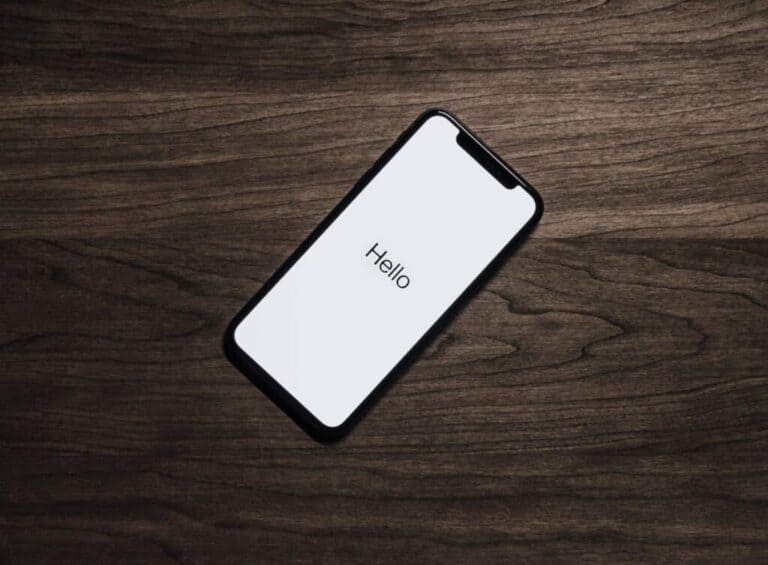
VoLTE, short for Voice over Long-Term Evolution, transforms how we make phone calls. This technology uses 4G LTE networks to transmit voice calls, offering improved call quality and efficiency. VoLTE enables clearer audio, faster call connections, and the ability to use data while on a call.
Many modern smartphones come with VoLTE enabled by default. Users can choose to turn it on or off based on their preferences and network availability. Keeping VoLTE on can enhance the overall calling experience, especially in areas with strong 4G LTE coverage.
For those considering whether to use VoLTE, it’s important to note that it can help conserve battery life. VoLTE calls typically use less power than traditional voice calls, as the phone doesn’t need to switch between different networks for voice and data.
Key Takeaways
- VoLTE improves call quality and allows simultaneous data usage
- Most modern smartphones support VoLTE, with the option to toggle it on or off
- Using VoLTE can lead to better battery performance during calls
Understanding VoLTE Technology
VoLTE technology has revolutionized mobile communications, offering enhanced call quality and improved network efficiency. This advanced system integrates voice services seamlessly with 4G LTE data networks.
What Is VoLTE and How Does It Work
VoLTE stands for Voice over Long-Term Evolution. It enables voice calls to be transmitted over 4G LTE data networks instead of traditional 2G or 3G voice networks. VoLTE uses IP packets to carry voice data, similar to internet-based calls. This method allows for higher-quality audio and faster call connection times.
The technology utilizes wideband audio codecs, which capture a broader range of voice frequencies. This results in clearer, more natural-sounding conversations. VoLTE also supports simultaneous voice and data usage, allowing users to browse the internet or use data-dependent apps while on a call.
The Evolution from 2G and 3G to 4G LTE and 5G
Mobile networks have progressed significantly since the introduction of 2G. Each generation has brought improvements in speed, capacity, and functionality.
- 2G: Primarily for voice calls and text messages
- 3G: Introduced mobile internet access
- 4G LTE: Faster data speeds and improved voice quality with VoLTE
- 5G: Ultra-fast speeds and lower latency
VoLTE serves as a bridge between 4G LTE and 5G technologies. It paves the way for voice services in 5G networks, which will further enhance call quality and enable new communication features.
Benefits of VoLTE for Voice Calls and Data Usage
VoLTE offers several advantages over traditional voice networks:
- Improved call quality: Clearer audio and reduced background noise
- Faster call connection: Calls connect up to twice as quickly
- Better battery life: More efficient use of phone resources
- Simultaneous voice and data: Use data services while on a call
- Enhanced coverage: Improved signal in areas with strong LTE coverage
VoLTE also benefits carriers by increasing network efficiency. It allows them to reallocate spectrum from older technologies to more advanced services, improving overall network performance for users.
Setting Up VoLTE on Smartphones
VoLTE setup varies across different smartphone platforms and models. The process typically involves navigating through device settings and toggling specific options.
Enabling VoLTE on Android Phones
Most Android phones have VoLTE enabled by default. To check or change the setting:
- Open the Settings app
- Tap “Network & Internet” or “Connections”
- Select “Mobile Network” or “Cellular Network”
- Look for “Advanced” settings
- Find “Enhanced 4G LTE Mode” or “VoLTE” toggle
Some Android devices may hide the VoLTE option. In this case, users should check for software updates or contact their carrier for assistance.
Samsung devices often have a separate “VoLTE calls” option in the Mobile Networks menu.
How to Turn VoLTE On for iPhones
iPhones with iOS 12.1 or later support VoLTE. To enable it:
- Go to Settings
- Tap Cellular
- Select Cellular Data Options
- Turn on “Enable LTE” or “Voice & Data”
For dual SIM iPhones, users can select the preferred line for VoLTE calls. Not all carriers support VoLTE for both SIMs simultaneously.
iPhone users should ensure their carrier supports VoLTE. Some carriers may require a specific plan or SIM card for VoLTE access.
Compatibility Issues with Older Devices
Older smartphones may lack VoLTE support. Devices manufactured before 2013 often don’t have the necessary hardware.
Some older phones may require a software update to enable VoLTE. Users should check for available updates in their device settings.
Carrier compatibility is crucial. Even if a phone supports VoLTE, the feature may not work if the carrier doesn’t offer it.
Users with incompatible devices may need to upgrade to a newer smartphone to access VoLTE features.
Impact of VoLTE on Network and Device Performance
VoLTE technology affects battery life, call setup times, and data usage on mobile devices. These factors influence user experience and network efficiency.
Battery Life and VoLTE’s Battery Consumption
VoLTE can impact battery life differently compared to traditional voice calls. The technology uses LTE networks for voice transmission, which can be more power-efficient in areas with strong 4G coverage. However, in weak signal areas, VoLTE may drain the battery faster as the device works harder to maintain a connection.
US carriers have implemented various optimizations to reduce VoLTE’s power consumption. These include advanced power management techniques and network-side improvements. Users can typically expect similar or slightly better battery performance with VoLTE enabled, especially in urban areas with robust LTE infrastructure.
Some devices offer settings to toggle VoLTE on or off. This allows users to manage battery usage based on their location and network conditions.
VoLTE, Wi-Fi Calling, and Their Effects on Call Setup Time
VoLTE and Wi-Fi calling significantly reduce call setup times compared to traditional cellular calls. VoLTE calls typically connect in 1-2 seconds, while older technologies may take 6-8 seconds.
Wi-Fi calling offers similar benefits when cellular coverage is weak. It uses internet connections for voice calls, often resulting in faster call setup and improved call quality indoors.
The quick connection times of VoLTE and Wi-Fi calling enhance user experience. They allow for more natural conversation flow and reduce the likelihood of missed calls due to long setup times.
Network congestion can affect these technologies. During peak usage hours, call setup times may increase slightly, but they generally remain faster than traditional cellular calls.
Data Usage and Network Speed Considerations with VoLTE
VoLTE uses data for voice calls, but its impact on overall data usage is minimal. A typical VoLTE call consumes about 1MB of data per minute, which is negligible for most data plans.
The technology improves network efficiency by using spectrum more effectively. This can lead to faster data speeds for all users on the network, even those not actively using VoLTE.
VoLTE calls take priority over other data traffic. This ensures call quality remains high, but it may slightly reduce available bandwidth for other applications during active calls.
Some carriers offer VoLTE calls without counting against data caps. This policy encourages VoLTE adoption and benefits users with limited data plans.
Network congestion can affect VoLTE performance. In heavily loaded cells, call quality may degrade, but it often remains superior to traditional voice calls.
Troubleshooting Common VoLTE Issues
VoLTE can sometimes experience technical hiccups. Users may need to disable the feature, fix connectivity issues, or work with their specific carrier to resolve problems.
How to Disable VoLTE When Needed
Turning off VoLTE can be a quick fix for certain issues. To disable VoLTE on most smartphones:
- Open the Settings app
- Tap “Network & Internet” or “Connections”
- Select “Mobile Network” or “Cellular Network”
- Find “VoLTE” or “Enhanced 4G LTE Mode”
- Toggle the switch to Off
This process may vary slightly depending on the device and operating system. Users should consult their phone’s manual for specific instructions if needed.
Resolving Connectivity Problems and Poor Call Quality
VoLTE connectivity issues can lead to dropped calls or poor voice quality. Users can try these steps:
- Restart the device
- Check for software updates
- Reset network settings
- Ensure strong 4G LTE signal
- Clear cache of the Phone app
If problems persist, users should contact their carrier’s support team. They may need to update the phone’s carrier settings or provisioning.
Addressing VoLTE Issues with Specific Carriers
Different carriers may have unique VoLTE configurations. Verizon users can dial *611 for support. T-Mobile customers should ensure their SIM card is VoLTE-compatible.
For all carriers:
- Verify the phone is VoLTE-capable and supported
- Check if VoLTE is available in the current location
- Ensure the account is set up for VoLTE services
Carrier-specific troubleshooting steps may be required. Users should refer to their provider’s website or contact customer support for tailored assistance.
Frequently Asked Questions
VoLTE settings can be adjusted on various smartphone models. Users may need to navigate device-specific menus to enable or disable this feature.
How can I disable VoLTE on an Android device?
To turn off VoLTE on Android:
- Open the Settings app
- Tap “Network & Internet” or “Connections”
- Select “Mobile Network”
- Find “Advanced” settings
- Toggle off “Enhanced 4G LTE Mode” or “VoLTE”
The exact steps may vary slightly between Android versions and manufacturers.
What are the steps to turn off VoLTE on a Samsung phone?
Samsung users can disable VoLTE by:
- Going to Settings
- Tapping “Connections”
- Selecting “Mobile Networks”
- Turning off the “VoLTE calls” switch
Some Samsung models may have the option under “Voice networks” instead.
Can VoLTE be switched off on an iPhone, and if so, how?
Yes, VoLTE can be turned off on iPhones. To do so:
- Open Settings
- Tap “Cellular”
- Select “Cellular Data Options”
- Tap “Voice & Data”
- Choose “3G” or “4G” instead of “VoLTE”
For dual SIM iPhones, the process might differ slightly.
What are the potential consequences of turning off VoLTE?
Disabling VoLTE may lead to:
- Reduced call quality
- Slower call connection times
- Limited access to HD voice features
- Possible issues with network coverage in some areas
Users should consider these factors before switching off VoLTE.
What are the advantages of having VoLTE enabled?
VoLTE offers several benefits:
- Improved voice call quality
- Faster call setup times
- Better battery life during calls
- Simultaneous voice and data usage on 4G networks
These advantages make VoLTE a preferred option for many users.
Why has VoLTE suddenly appeared on my smartphone?
VoLTE may appear due to:
- A recent software update
- Network upgrades by your carrier
- Activation of a new SIM card supporting VoLTE
Carriers are phasing out older networks, making VoLTE more prevalent on modern devices.






